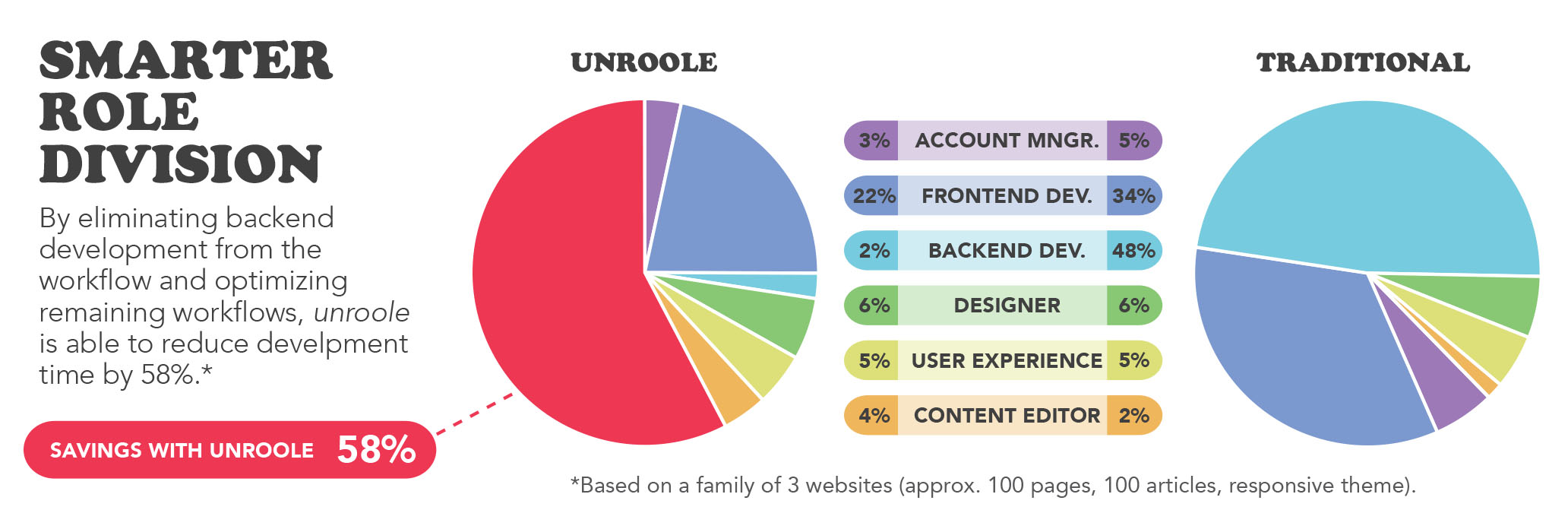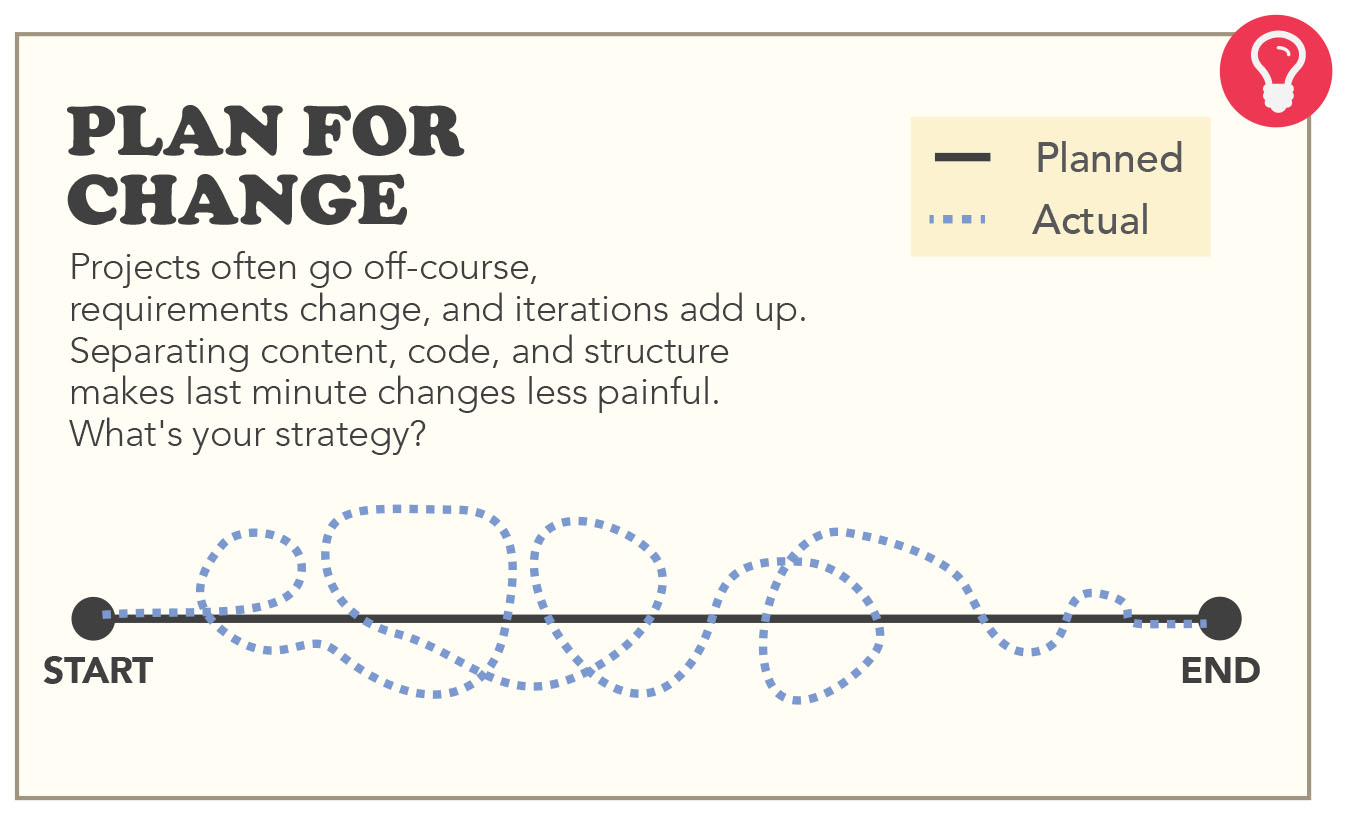Incorporating a new tool in your everyday workflow is exciting and can be a rewarding experience if the tool delivers on its promises. The process of adopting new tools in your agency workflow starts with exploration; considering how to increase team productivity, decrease production costs, and increase the quality of your service. One of the key criteria here is that integration costs of new tools (in both time and money) don’t negate the benefits you’re promised. Some agencies are not prepared to make such an investment, and thus don’t challenge or adapt their work processes. These agencies will be affected by this shortsighted attitude in the long run.
The web development and design industry is at its peak and we are not about to see it decline any time soon. Competition is stiff, making constant change a necessity. A big differentiator between those in the industry is whether changes you are making are pushing you ahead of the curve or keeping your head just above water. That is why the wisest decision-makers are investing today in tools that will help them stay relevant in the market in years to come. In the use case document which is downloadable below, we are giving an in depth overview of how unroole can help you stay ahead of the curve.
When implemented in the digital agency workflow, unroole gives you an opportunity to:
- Decrease turnaround time of both the project as a whole and individual iterations
- Remove backend and server-side operations from your task list
- Reduce the costs of websites development and maintenance by about 60%
- Create a more integrated decision making process
unroole is a cloud-based service that enables you to host, develop and maintain an unlimited number of websites with maximum scalability and never before seen flexibility. The paradigm shift in website development and administration that unroole is introducing is about automating processes that were not changed in the last decade by any of the open source and paid platforms and frameworks. These processes include backend and database management, code/functionality changes and updates, more freedom for developers, and more control for the content editors.
Faster turnaround and iterations
To overcome the shortcomings of your current linear workflow, unroole is introducing the separation of concerns between structure, code, and content of websites. In a linear workflow, each milestone of the project depends on the previous milestone, frontend depends on backend, backend depends on UX, and so on. When there are changes needed at any stage, your team has to go a few steps back and re-do the work in the previous milestone. With unroole, your teams can work independently on their portion of the project and create various versions of the website by combining versions of code, design structure, and even content. You can simultaneously create versions of each of these elements, then assemble them like Lego blocks in a website preview. This modular approach is inherent to the system, so combining changes of iterations is possible with just a few clicks. This means time from clients feedback to its implementation to clients review of changes is considerably shorter and more manageable.
unroole saves tremendous amounts of time during the iteration process by making the whole project a centre of collaboration between various project teams and the client, thus avoiding the bottlenecks a traditional workflow causes.

No need for backend operations
As a cloud service, unroole handles all backend operations for you without the tradeoffs of one-time setups for multi-site architecture. Besides the time wasted on setting up and maintaining your hosting and databases, your team is also wasting a lot of time on setting up and managing different environments for every website you build. To maintain all the changes during the project cycle you need three environments - local, staging and production. Each iteration demands code migration, content migration, and merging. unroole redefined this workflow by automating repetitive and redundant tasks of managing environments. All iterations in code, structure, and content are done in their own versions, then assembled into a preview. Once the winning combination is chosen, it is pushed live with a single click. This is how unroole removed migrations from the workflow. When it comes to networked websites that use the same content and code-base, unroole scales gracefully. Traditionally, networked websites lack the flexibility to have their own structure and content logic. The scalability and modularity of unroole enables you to make custom structures on each page of each website, without any restraints, while still preserving visual consistency as you are intelligently reusing the same code-base.

Less resources needed for development
unroole website themes are built only with HTML, CSS, and JavaScript. Removing backend operations doesn’t only mean freedom from hosting and database management, it means freedom from backend code of your CMS backed websites as well. With the current CMSs on the market, you need a larger team with different skill-sets. Larger teams need larger funds and more overhead costs. Besides keeping your team size to a minimum, frontend-only development enabled us to implement flat information structure for unroole websites. unroole is information-architecture agnostic. All the data that is retrieved from the database is in JSON format so your front-end team has the total control over how the data will be presented, and your UX team doesn’t have to confine to the one-size-fits-all paradigm. Another benefit is that you don’t have to build plugins to integrate with third-party APIs, services or even self-hosted databases.
Scalability and modularity is the number one priority when it comes to building themes. unroole theme files consist of html blocks that are assembled in the page building process. These blocks can be coded to give page builders options on layout and content presentation. The ability to create custom options is the default state, not something that has to be coded on top of the given structure like in other CMSs. Furthermore, to prevent unexpected results due to the misconfiguration of each block, you can give page builders only those options that are needed as dictated by the website design and architecture. There is no possibility of breaking the intended layout or design no matter who the page builder is - client or your team member.

More integrated decision making process
unroole makes it possible for different team members to be included in the decision making process with a much broader view of the entire project. In the traditional linear workflow, previewing changes made to content, design, code, or structure is an isolated process. Each change can only be previewed on its own, without the insight of how will it affect entire website. The only way to see changes in the context of the entire website is to publish them, and at that point it is too late. Also, in order to compare several versions of your entire website, you have to set them up as separate instances. This does not scale well.
unroole enables you to make more informed decisions as website design, code, structure and content can have infinite versions and can be combined to create previews of entire websites. Previews can be distributed via password protected links and used in focus groups or A/B testing. This workflow is proven to be indispensable in efficiently creating a user-centric experience with your clients websites and implementing in the most scalable way possible.
Below, you can download a full use case and find out how unroole can give you more time to focus on what makes your websites unique instead of what makes them the same as others.

